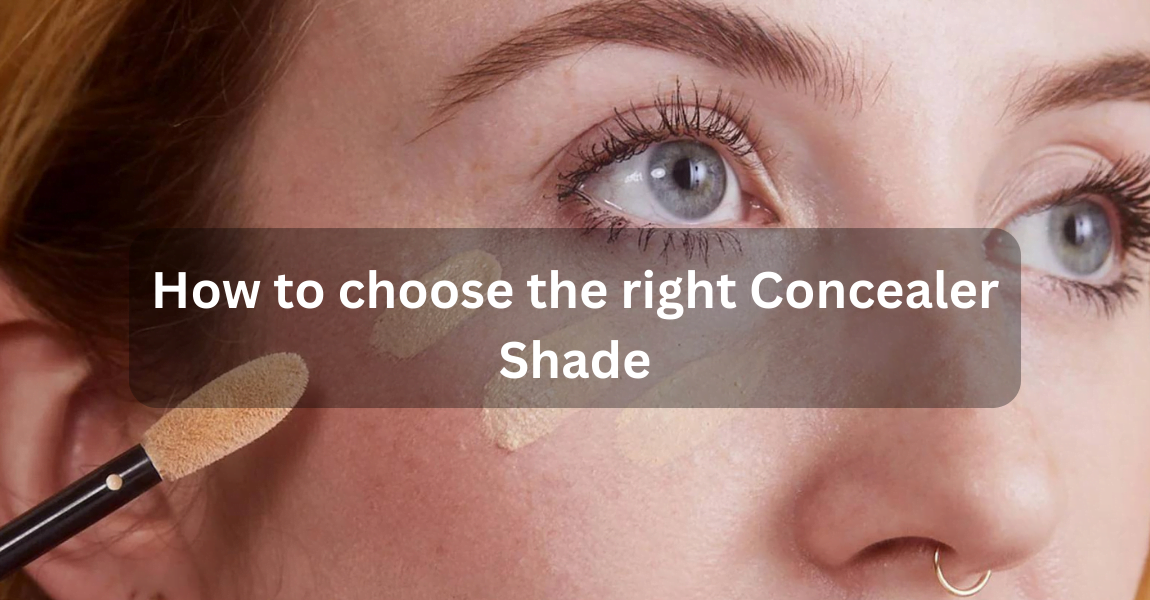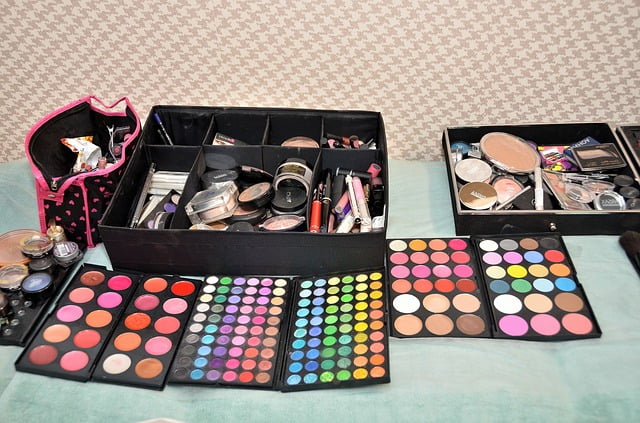Understanding the Fundamentals
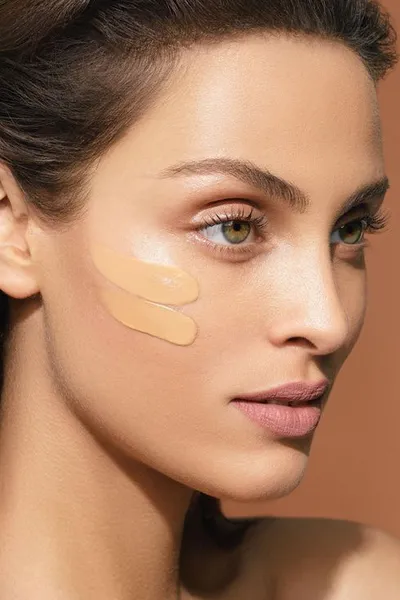
Choosing the proper foundation shade may be a difficult but rewarding task. By learning the fundamentals, you can eliminate the guesswork and find the right fit for your skin. Here’s a more in-depth look at how to choose a foundation shade.
Also Read: Types of tops for Women
The Importance of Selecting the Correct Foundation Color
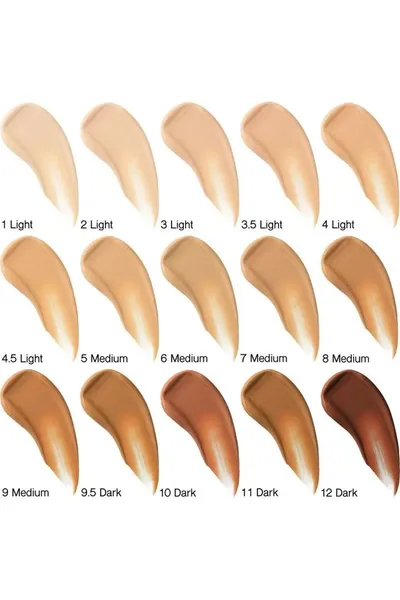
The foundation serves as a canvas for the rest of your makeup, establishing the tone (both literally and metaphorically) for your entire appearance. When you know how to choose a foundation shade for your skin tone, you may attain a natural and radiant appearance. Choosing the wrong hue, on the other hand, might call attention to flaws, produce sharp lines, or make the skin seem unnatural. Furthermore, the proper foundation tone guarantees evenness by concealing any redness, discoloration, or blemishes and allowing other cosmetic products to mix easily on your face.
Also Read: Types of Skirts
Intensity of Your Skin Color
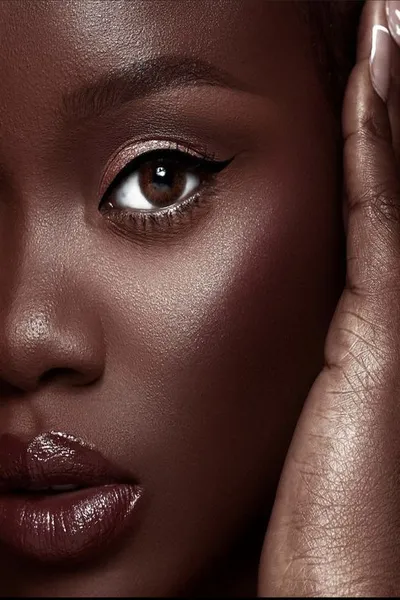
Your skin color intensity relates to how pale or dark your complexion is. It’s the first thing most people see and is commonly described using phrases like fair, light, medium, tan, deep, and so on. It is important to emphasize, however, that intensity does not provide the entire picture. Two people with the same intensity but distinct undertones may require different foundation shades. The first step in limiting your shade possibilities is to recognize the strength of your skin tone.
Also Read: Wedding Outfit Ideas for Women
What exactly are undertones?
Every skin has an undertone that extends beyond the surface hue. Undertones are the subtle colors beneath the skin’s surface that play an important part in selecting which foundation shade will seem the most natural. Undertones are classified into three types: warm (yellow or golden), cool (pink or blue), and neutral (a blend of warm and cool). Knowing your undertone is critical to understanding how to choose a foundation shade that blends well with your skin. A foundation that caters to a warm undertone, for example, will look wrong on someone with a cool undertone, even if the intensity matches. You’ll be better able to choose a shade that compliments your natural color if you know what your undertone is.
Also Read: Latest Fashion Trends
Step 1: Know Your Skin
When learning “how to choose a foundation shade,” the first and most important step is to thoroughly understand your complexion. This understanding extends beyond the surface, delving into factors that determine how a foundation shade will interact with your natural coloring.
Determining Your Skin Tone
Your skin tone, often known as your complexion, is the color of your skin on the surface. Skin tones range from fair to deep and can be impacted by variables such as heredity, sun exposure, and even environmental situations. Recognizing your skin tone is the first step in determining how to choose a foundation shade. Remember that this is only the beginning, and there are additional layers to unearth, such as undertones, which might impact your ultimate result.
Also Read: Types of Jewellery
Identifying Your Skin Type
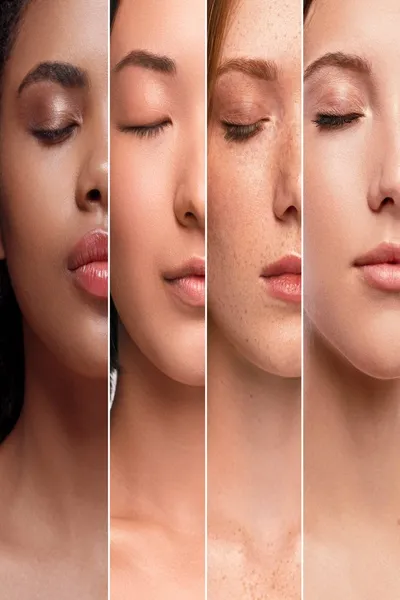
Before you even contemplate color, you must first determine your skin type. Your skin type, whether oily, dry, mixed, sensitive, or normal, influences the sort of foundation formula that will work best for you. For example, matte foundations are frequently preferable for oily skin, while moisturizing foundations may be better for dry skin. Knowing your skin type guarantees that the foundation not only matches your skin tone but also enhances and caters to its specific demands.
Also Read: Summer Outfit Ideas for Women
Understanding Your Skin’s Undertones
Your skin contains underlying hues known as undertones that extend under the surface. These are not immediately noticeable but have an impact on how certain colors appear on your skin.
How to Tell Your Undertone?
It may appear difficult to determine your undertone; however, there are subtle clues your skin gives away:
Signs of a Cool Undertone

- Green veins emerge on the bottom of your wrist.
- Gold jewelry looks better on you than silver jewelry.
- You tan quickly and burn rarely.
Signs of a Warm Undertone

- Veins on the underside of your wrist appear green.
- Gold jewelry flatters your complexion more than silver.
- You tan easily and rarely burn.
Signs of a Neutral Undertone
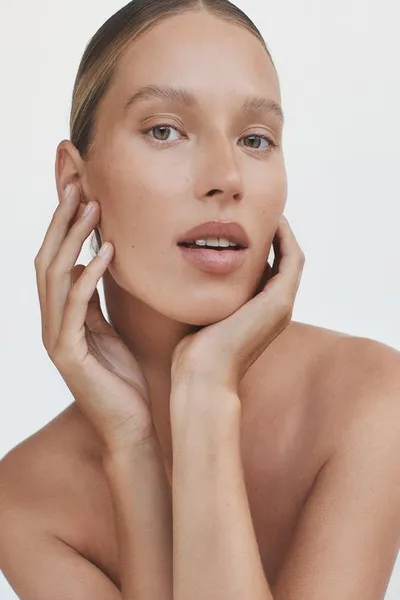
- It’s difficult to tell if your veins are blue or green.
- Both gold and silver jewelry appear to look good on you.
- The way your skin reacts to the sun differs.
Also Read: Yoga Clothes for Women
Why do undertones matter in foundation selection?
While two people’s skin tones may appear to be identical on the surface, distinct undertones may need wholly different foundation hues. A great match in foundation hue is more than just the surface color; it is also about ensuring that the undertones of the foundation match those of your skin. When they match, the foundation mixes effortlessly, giving the appearance of being natural and radiant. Understanding undertones is essential for learning how to choose a foundation shade that will improve and compliment your complexion.
Step 2: Testing and Swatching Foundations
Now that you’ve mastered the fundamentals of skincare, it’s time to put your knowledge to use. In this section on how to choose a foundation shade, we’ll look at practical strategies for discovering your ideal match.
Testing Foundations on Bare Skin
It’s critical to test a foundation shade on your skin before committing to it. Begin by carefully cleaning and drying your face. Apply a tiny quantity of foundation to clean, moisturized skin, concentrating on the jawline or the side of your face. This gives you a blank canvas to experiment with to observe how the foundation interacts with your natural skin tone and undertones.
Also Read: Handbag Brands in India
The Face Method vs. The Swatches Method
There are two basic methods for foundation testing:
Face Method: This method involves applying many colors of foundation directly to your face, usually on your jawline or cheek. Blend each shade horizontally, then walk into natural light to see which shade blends the best with your skin. This approach enables you to examine how the foundation interacts with your specific undertones and skin tone.
Swatches Method: You may also swatch numerous colors on your forearm or wrist. This procedure, however, may not be as precise because the skin color and undertones on your arm might differ greatly from those on your face.
Testing Foundation on Your Jawline
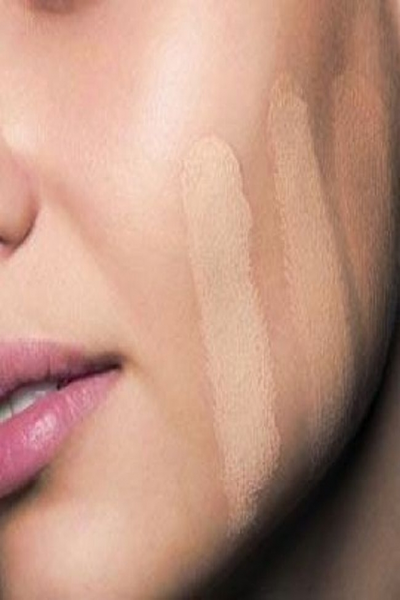
Because it is close to your face and usually has the same hue as your neck and chest, your jawline is a great testing location. This guarantees a smooth transition from your face to the rest of your body. Allow the foundation to rest for a few minutes after thoroughly blending it into your skin. Examine the shade closely in natural light to see whether it blends in with your complexion. If it does, you’ve most likely identified a suitable match.
Also Read: Luxury Clothing Brands In India
Why Should You Test in Natural Light?
The easiest way to choose a foundation shade is to use natural light. Colors might be distorted by artificial lighting in stores, making it difficult to analyze the match precisely. Step outdoors or near a window after applying the foundation to check how it looks in natural light. This will offer you the most realistic image of how the color will look on your skin.
Step 3: Factors to Consider in Foundation Selection
As you go deeper into the subject of “how to choose a foundation shade,” you’ll discover that finding the correct shade is only one component of the puzzle. Step 3 entails taking into account a variety of aspects that might have a big influence on your foundation selection, ensuring that it not only matches your skin tone but also fulfills your specific demands and preferences.
Knowing the Level of Coverage You Desire
When it comes to coverage, the foundation does not come in one size fits all. Some people like a barely-there, natural appearance, while others prefer a more complete covering to disguise flaws. It is critical to understand the degree of coverage you require. Here’s a short recap:
Light Coverage: Ideal for folks with generally clean skin who like a natural appearance.
Medium Coverage: Provides a natural-looking balance by masking tiny imperfections and redness.
Full Coverage: Provides enough coverage for more noticeable flaws and an even skin tone.
Also Read: Type of Jackets for Women
The Role of Different Foundation Formulas
The foundation comes in various formulations, each designed to cater to specific skin types and needs. Understanding these formulations can help you select a foundation that not only matches your skin tone but also enhances its texture and appearance.
Be Careful About Ingredients
Consider the components in your foundation if you have sensitive or reactive skin. To lessen the risk of irritation or breakouts, look for foundations labeled hypoallergenic or non-comedogenic.
ABCs of Coverage
A for Application: Think about how you want to apply your foundation. Powder foundations create a matte finish and are more adaptable than liquid foundations.
B for Buildability: Some foundations are layer-able, which means you can add additional covering without seeming cakey.
C for Finish: Your foundation’s finish can range from matte to dewy. Choose one that complements your skin tone and desired appearance.
Picking a Blendable Foundation
A blendable foundation is vital for attaining a natural, smooth look. Look for products that blend well and do not settle into fine lines or pores.
Step 4: Tips and Mistakes to Avoid
As you learn “how to choose a foundation shade,” it’s critical to be aware of frequent errors and get helpful advice that may make the process easier and more successful.
Match Foundation to Your Neck and Body
When deciding how to choose a foundation shade, don’t restrict your evaluation to your face alone. It’s critical to match your foundation to your neck and body for a harmonious and natural look. The skin on your neck and chest is frequently darker than the skin on your face. Applying a foundation that corresponds to these regions ensures a smooth transition and prevents the dreaded “mask effect.”
Why it’s Essential to Start with Multiple Options
Avoid the temptation to choose the first foundation shade that appears to be a good match for your skin tone. Because undertones and strength fluctuate between brands and lines, the hue that works for one may not work for another. Begin with several alternatives that you feel match your skin tone and undertones and thoroughly try them to discover the greatest fit.
The Role of Virtual Try-On Tools
Many cosmetic businesses now include virtual try-on facilities on their websites or apps. You may use these tools to check how different foundation tones will look on your skin by uploading a photo or using your device’s camera. While they are not a replacement for real-world testing, they may be a useful beginning point and a fun way to explore ideas.
Common Mistakes in Choosing a Foundation Shade
Understanding the potential risks might assist you in avoiding typical blunders. Among these errors are the following:
Choosing the incorrect undertone: Ignoring your undertone might result in a foundation that is mismatched and does not suit your natural hue.
Leaving out the patch test: If you don’t test a foundation on your skin, you can end up with an incompatible hue that doesn’t mix well.
Ignoring seasonal shifts: Because your skin tone might fluctuate with the seasons, try altering the color of your foundation accordingly.
Using swatches solely: Swatching a foundation on your hand or arm does not accurately portray how it will appear on your face.
Step 5: Adaptation and Updates
Choosing the proper foundation shade is a continuous process that involves adaptability to changing situations. In this phase of “how to choose a foundation shade,” we’ll look at how to change and update your foundation shade to keep it a great fit.
Adjusting Foundation Shade with Seasonal Changes
Adapting to seasonal fluctuations is one of the most important parts of foundation shade adaptation. Your skin tone might fluctuate with the seasons owing to sun exposure, tanning, or temperature changes. Here’s how to get around it:
Summer: Because you’re more likely to have a tan or a somewhat darker complexion in the summer, you may require a foundation shade that’s a shade or two darker than normal. To compliment your sun-kissed complexion, use a foundation with a warmer undertone.
Winter: Because your skin is paler in the winter due to less sun exposure, try switching to a lighter shade or a foundation with a cooler undertone to complement your complexion.
Transitional Seasons: If your skin tone is in between your summer and winter shades in the spring and fall, you may require a shade that bridges the gap.
Also Read: Types of Coffee
Considering Face Tan and Skin Changes
Your face may not tan as quickly as the rest of your body, especially if you use sunscreen religiously. This might lead to a misalignment of your face and body. Consider the following to address this:
Bronzer and Blending: Bronzer may be used to bring warmth to your face and blend down your neck to produce a smooth transition with your body.
Layering: Using two distinct foundation shades—one for your face and another for your neck and chest—can be essential at times. Blend them gently at the jawline to get a smooth, natural appearance.
Mixing shades: Some people want to combine their foundation colors to produce a unique mixture that fits their skin tone.
Sheer Foundations: During transitional seasons or when dealing with small tan fluctuations, a sheer foundation or tinted moisturizer that enables your natural skin to show through may be appropriate.
Conclusion
You’ve gained useful insights and practical information while learning “how to choose a foundation shade” that works best for you. You’ve discovered that foundation selection entails more than just matching surface colors. It entails comprehending your skin’s distinct qualities, from tone and undertones to type and seasonal fluctuations.
Choosing the perfect foundation color is a combination of art and science. It is considered art since it necessitates an awareness of your particular tastes and style. It’s a science because detecting the intricacies of your skin, from its undertones to its ever-changing nature, is involved.
FAQs on how to choose a foundation shade
1. What is the significance of selecting the proper foundation shade?
Choosing the appropriate foundation tone is critical since it creates a natural and flawless appearance, improves your complexion, and makes your makeup appear seamless.
2. How do I identify my undertone while choosing a foundation?
Consider the color of your veins, the jewelry that flatters you, and how your skin reacts to sunshine to determine your undertone.
3. Is it better to match my foundation to my face, neck, or body?
For a smooth transition between your face and the rest of your skin, match your foundation to your neck and body.
4. How can I modify the color of my foundation to accommodate seasonal changes?
In the summer, go a little darker; in the winter, go a little lighter. For transitional seasons, combine colors.
5. Are there any tools or programs that can assist with foundation shade selection?
Yes, several companies include virtual try-on tools or applications to help you choose your ideal foundation color.
Popular Searches
Perfect makeup Products | Skin Care Tips for Monsoon | Top 6 Products for your Skin Care Routine | Latest Fashion Trends for Women | Ethnic Wear Brands in India | Fashion Photographers of India | Fashion Magazines in India | Indian Fashion Bloggers | Fashionable Watches for Men | The Best Watch Brands in India | Bridal Lehenga Trends | How to Style Skirt | New Clothing Style | Rainy Season Shoes for Womens | Types of Sports Shoes




